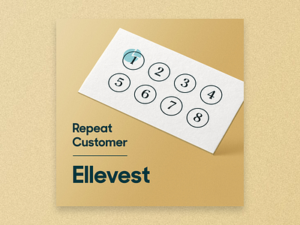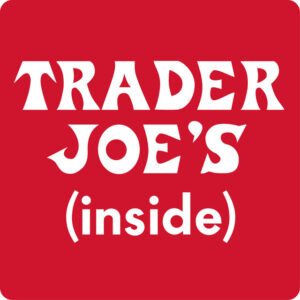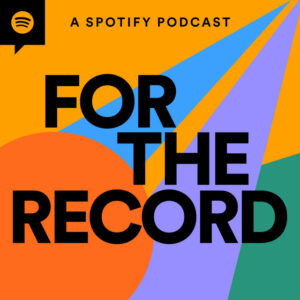So, you want people to feel your brand, not just hear about it, right? That’s where podcasting comes in. It’s not just about talking at your audience; it’s about connecting in a way that feels real, relevant, and true to who you are. Podcasts offer a golden opportunity to get your brand’s personality out there, loud and clear. Let’s dive in and make it happen.
1. Know who you are – no, really, who are You?
Before hitting “record,” take a moment to think: what makes your brand your brand? What are the values, quirks, and personality traits that set you apart? When you’re clear on these, it’s a lot easier to create a podcast that feels like a natural extension of your brand, not just a marketing pitch.
Example: Write down your core values and personality traits. Need inspiration? Look at Patagonia’s podcast, “The Dirtbag Diaries.” They don’t need to say, “We’re all about the environment”—you feel it in every episode through stories of adventure and sustainability. It’s effortless, and that’s what makes it powerful.

2. Talk directly to your people
Want your podcast to resonate? Know who’s listening! Whether it’s young creatives, eco-conscious parents, or hardcore tech geeks, your content should feel like it’s meant just for them. Skip the broad strokes—get specific and relatable.
Example: Ask yourself, “Who is my audience, and what do they care about most?” Mailchimp does this perfectly with their podcast “Call Paul,” which speaks directly to small business owners. Every episode is packed with advice, real stories, and insights that matter to them. Nail this, and you’re no longer just a brand—they’ll see you as a trusted friend.
3. Get clear on the “Why” of your podcast
Why are you starting this podcast? Is it to educate, entertain, or inspire? Defining the purpose keeps things focused. When your listeners know why they’re tuning in, it’s easier for them to see your podcast as an extension of your brand’s mission.
Example: Slack’s “Work in Progress” podcast dives into what work means today. It aligns perfectly with their brand’s mission to create better workplaces. Each episode adds value, is totally on-point, and gives listeners a reason to think, “These folks know what they’re talking about.”

4. Give your audience what they really want – value, value, value
You’re not here to fill airtime; you’re here to deliver something valuable. Plan your episodes with topics that both reflect your brand and answer the burning questions in your audience’s minds. When people get value from you, they’ll remember it.
Example: Start with a simple outline. What topics will you cover in the next few episodes? Look at Basecamp’s “The Distance.” Each episode focuses on sustainable business success, reflecting Basecamp’s own long-term approach. It’s thoughtful and shows their audience what Basecamp values.
5. Choose the right format – make It yours
Your podcast format is like your brand’s personality in audio form. Are you an expert with stories to share? Try solo episodes. More of a conversationalist? Go co-hosted. Choose a style that feels like you, not a copy of everyone else.
Example: Zendesk uses a narrative format in “Repeat Customer,” sharing customer service stories that align with their focus on creating great customer experiences.

6. Consistency builds loyalty
Consistency is huge in podcasting. Choose a release schedule you can stick with—weekly, bi-weekly, monthly—and commit to it. Regular releases build trust and make your audience feel they can rely on you.
Example: Trader Joe’s podcast does this well, releasing episodes consistently to keep their audience coming back for more. Loyal listeners are always ready to hit “play.”
7. Infuse your brand’s personality – make ‘em remember you
Your brand isn’t some faceless entity, so don’t let your podcast feel like one. Make sure your brand’s personality shines through in every episode, whether it’s playful, inspiring, or downright geeky. The more “you” it feels, the stronger the connection.
Example: Think about your brand’s voice. How can you make sure it comes through in every episode? Spotify’s “For the Record” is the perfect example—laid-back, cool, and exactly like the brand itself.
8. Make it interactive – Get your audience involved
Your podcast doesn’t have to be a one-way street. Invite your listeners to join in by asking questions, suggesting topics, or sharing stories. The more interactive, the more invested they become.
Example: Ask for feedback at the end of each episode. Use social media or email to gather questions and suggestions. HubSpot’s “The Growth Show” does this well by taking listener questions, making each episode feel like a two-way conversation.

9. Keep production simple and sharp
Don’t let production fears stop you. Start with the basics: a good mic, quiet room, and decent software. Quality matters, but perfection isn’t the goal.
Example: Smart budgeting goes a long way. Start simple and scale up if you need to. Buffer’s “The Science of Social Media” keeps things high-quality but simple, using a good microphone and basic editing to ensure clear sound.

10. Promote like a pro – get it out there
Once you’ve got an episode ready, share it everywhere your audience hangs out: social media, your website, newsletters—get creative with teasers, clips, and behind-the-scenes posts.
Example: LinkedIn’s “Hello Monday” podcast is a masterclass in promotion. They use social media, emails, and even teaser clips to keep listeners engaged and coming back formore. Make a promotion plan, and you’ll keep your podcast top of mind.

Need help with production? With SmartPodcasting, the podcast label from Voicebooking, we can assist you with every aspect of podcasting. The Voicebooking way: choose only what you need—audio and mixing, a presenter with expertise in your niche, jingles, format, coaching, or even full recording services managed by us. Questions? Contact us at [email protected]. SmartPodcasting offers a complete podcast recording and production service to get you started.
In a Nutshell
Podcasting isn’t just a trend; it’s your chance to connect in a way that feels real, builds trust, and leaves a lasting impression. With the right approach, your podcast becomes more than content—it’s the voice of your brand, resonating with listeners who value what you stand for. So go on, make your brand unforgettable.







